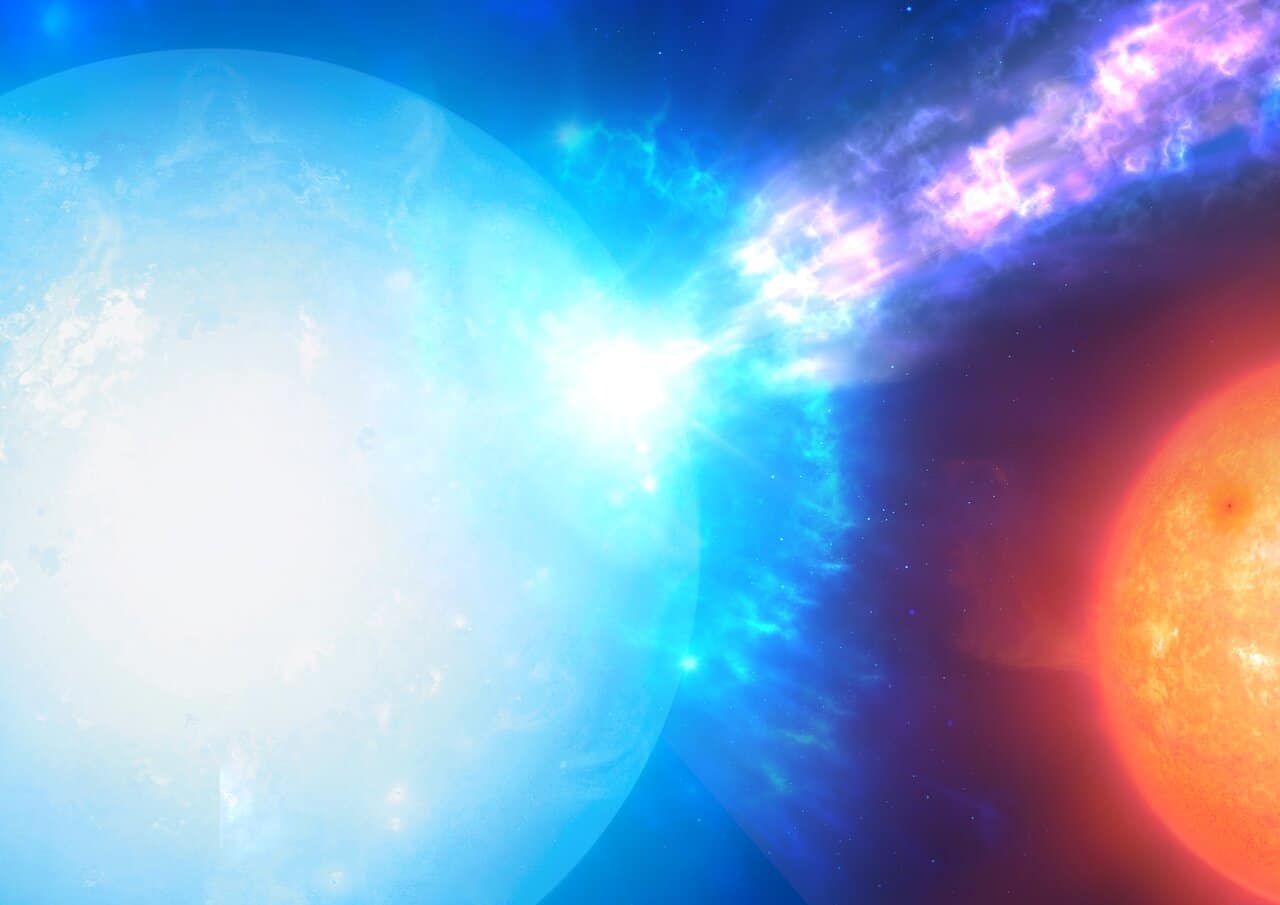These are a whole new type of star explosions that scientists have dubbed “micronovas”.
We know that things are often violent in the universe. Exploding stars, whose outer layers are thrown out into the universe and release an incredible amount of energy, are certainly not uncommon. In the meantime, we know of the existence of several stellar explosions, including ordinary novas and supernovas. But now we can add a new type of star explosion to this list, namely micronovas.
Micronova
Contrary to their name, micronovas are extremely violent explosions on the surface of white dwarf stars (see box). However, micronovas are less powerful than ordinary novas; the kind of starbursts that astronomers have known for centuries. Moreover, a micronova is smaller in size and only lasts a few hours. Finally, a micronova consumes about one millionth the amount of fuel of an ordinary nova. Hence the term “microphone”; one millionth.
Learn more about white dwarfs
As a star ages, hydrogen fusion in the star’s core stops and it swells. Then, a red giant is created. When the star then blows off its outer layers of gas and dust, the core contracts, leaving a white dwarf. The star has reached the end of her life. Such a white dwarf is about the same size as Earth, but has a much greater density (a teaspoon of white dwarf matter weighs about as much as an elephant on Earth!). The dying process also has a major influence on the planets that orbit such a star. Most of the planets will be pulled towards the star and swallowed up. Our sun will also end up as a compact white dwarf in five billion years. In fact, about 97% of all stars turn into white dwarfs.
The team first encountered these mysterious micro-explosions when analyzing data from the planet hunter TESS. “When we went through this data, we discovered something unusual: a bright flash of light that lasted a few hours,” said researcher Nathalie Degenaar. “As we searched, we found other such signals.”
three white dwarfs
Ultimately, astronomers spot micronovae on three different white dwarf stars. All three have a companion star from which they “steal” hydrogen. In addition, they have a strong magnetic field. The researchers suspect that hydrogen gas accumulates at the poles due to the magnetic field. The idea is that the temperature and pressure at the poles will slowly increase until the hydrogen fuses into helium, creating a thermonuclear explosion.

This art print shows a binary star system, consisting of a white dwarf (foreground) and a companion star (background), in which micronovae can occur. The white dwarf extracts matter from its companion, which is directed toward its poles. When the material falls on the hot surface of the white dwarf, it causes a micronova explosion that is confined to one of the poles of the white dwarf. Image: Mark Garlick
The results show that the universe still has surprises in store for us. “We thought we knew how explosions happen on stars,” says Simone Scaringi, head of the study. “But this discovery suggests that they could also start in a completely different way.” The results suggest that hydrogen fusion may also be a very local phenomenon. Hydrogen can accumulate at the magnetic poles of some white dwarfs, limiting fusion there.
Make no mistake! Although the “micro” prefix suggests that these are insignificant events, nothing could be further from the truth: such an eruption consumes about 20,000,000 billion kilograms, or about 3.5 billion large pyramids of Giza, out of fuel!
red act
Why are astronomers only now discovering the existence of micronovas? “It’s partly because they’re so short,” says researcher Paul Groot. “They are hard to catch in the act. The phenomenon is very similar to Type I bursts in neutron star systems, but only now have we been able to establish the connection with TESS data.
The newly discovered micronova challenges existing ideas about star explosions. The hunt for micronovas continues. The team plans to capture other extremely violent outbursts on exhausted stars in the near future using a combination of long-term observational campaigns and rapid tracking measurements. And perhaps many more are waiting to be discovered.
 DodoFinance Breaking News Made For You!
DodoFinance Breaking News Made For You!
